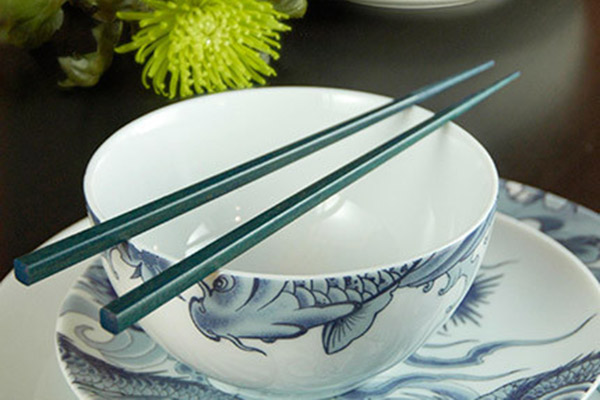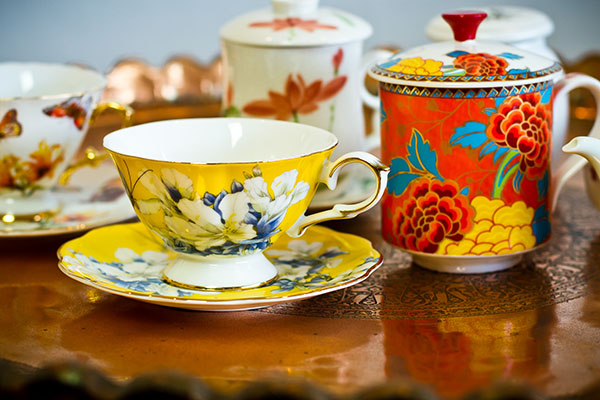This post is sponsored by Zengerine, but all the opinions expressed are my own.
Most Asian family traditions involve special meals, and we all know how much effort goes into preparing traditional foods. But there are nuances to setting a dinner table in many Asian cultures, as well. I can remember as a child, announcing that I’d figured out the perfect place to store my chopsticks when I wasn’t using them… stand them straight up in a bowl of white rice! “Nooo! Don’t do that!” my mother yelled, grabbing the offending chopsticks. What? That was a good place to keep them! “That’s for funerals,” Mom explained. That reason made no sense to me when I was little, but I didn’t prop my chopsticks in a rice bowl ever again.
Besides not offending your relatives, knowing a few things about Asian table setting and manners can help show off all your hard work in the kitchen. After all, we eat with our eyes, too!
Here are some tips for setting an Asian table:
Go Round Food makes the world go round, at least along the Pacific Rim. And literally, there is a preference for round tables, sometimes with lazy susans in the middle to help circulate the food. While square plates may look chic at upscale fusion bistros, circular plates are more traditional. Besides the practical reasons, circles also symbolize unity or togetherness in Chinese and other Asian cultures.
Have a bowl Or several of them. Small ceramic rice bowls are used with Japanese and Chinese cuisine, while metal bowls are often used in Korean cuisine. And a one-dish noodle meal (think ramen, pho or Taiwanese beef noodles) deserves a bigger serving bowl. Little bowls are also handy for dipping sauces, pickles or snacks.
Chopsticks By now you know that you shouldn’t put chopsticks in the bowl. Before a meal, chopsticks can be set on the side of a plate or bowl. If you need to set them down during the meal, only lay them across the top of the bowl, or on the edge of a plate. Or provide your guests with decorative chopstick rests to avoid letting the eating utensils touch the table.
Tea Time Use a teapot and loose tea leaves to brew a drink to complement your meal. And make sure to serve the tea in small cups, refilling your guests drinks as they need to be. For single cup of tea to go with a snack, you could steep a serving in a mug with its own lid to keep it warm.
Choose a color scheme Of course, red symbolizes good luck in Chinese tradition. But a little can go a long way — you don’t want your dining room to look like the Golden Dragon restaurant! Save vermillion and crimson for accent pieces. Another popular color scheme is blue and white: think Ming pottery. One of my personal favorite colors for dishware is calming celadon green: a shade of glaze that originated in Korea.
Keep tradition… or make it modern Tableware from Asia runs the gamut from formal to playful. For a more stately look, try antique-inspired gilded china. Rustic dishes made of earthenware, bamboo or even hollowed out coconut shells can convey a natural, tropical look. And if you’re a sucker for anything kawaii, try playful bright or pastel pieces, some even decorated with cute animals. This ain’t your mother’s dinner table, so find a style that suits your personality and lifestyle.
For unique, hand scouted finds for your home, visit Zengerine, an online home and fashion boutique that brings the world to you.



I also got scolded for putting my chopsticks that way, straight into rice bowl. My parents said that’s for Buddhists, since they stick incense that way too, and we’re Christian, so obviously, couldn’t do that. And thank goodness we don’t have a million pieces of silverware to set like westerners, geez. Fork left or right. Who cares! Haha! Thank goodness for the utility of chopsticks!! Also, one more thing, don’t agree with the hostess if she says her food sucks. Tell her it’s awesome anyways!
Oh yes, the humble brag. Never let the hostess downplay how delicious her cooking is!
Love this post, Grace! I was told I too that when offerings are made at the ancestral table or during the month of the Hungry Ghost, a pair of chopsticks are pushed straight up into a bowl of rice, which is why we should never do it at the dinner table. I love the idea that no one’s teacup should ever be left empty. We always make a game of who can grab the teapot first to refill each others cups. Thanks for sharing!
Love this, I just shared it on my FB page and Twitter.
Thanks!
Great post! Will be sharing it on my FB page tomorrow! (www.facebook.com/alldonemonkey)
Glad it was helpful. Thanks, Leanna!
also you have to tap your fingers when someone refills your cup of tea as thank you. (or is that a cantonese thing?)
Nothing to do with table etiquette, but I do love chopsticks for the range of cooking activities that one can do with them.
I also have used them for light mixing when making baking dishes or lightly whip up eggs, etc.
Jean, I *always* use chopsticks for cooking, too! In fact, I can’t boil spaghetti without them. Thanks for reminding!
I was scolded for the chopsticks in the rice thing, too. It did seem awfully convenient when I was a kid, for sure.
Dorothy, I think that may be a Cantonese thing. My (caucasian) dad picked that up when we were living in Hong Kong, and my (Taiwanese) mom scolded him for doing that and saying it was rude. Go figure. :)
Ha! Seems like the automatic reaction for American-born kids, right? I’ve never heard of the tapping on the teacup thing, either, so perhaps it’s a Cantonese tradition. Someone might confuse it with the wedding tradition of tapping on water glasses to get the bride and groom to kiss!
Grace, this is wonderful post, educational indeed.
My husband has taught me to use the chopstick wrappers at an Asian restaurant for placing my chopsticks that are in use. Though he will usually fold the wrappers for me. A very sweet gesture. :)
~Virginia
I love using chopsticks to cook–they don’t get hot. I even stick them in the toaster!